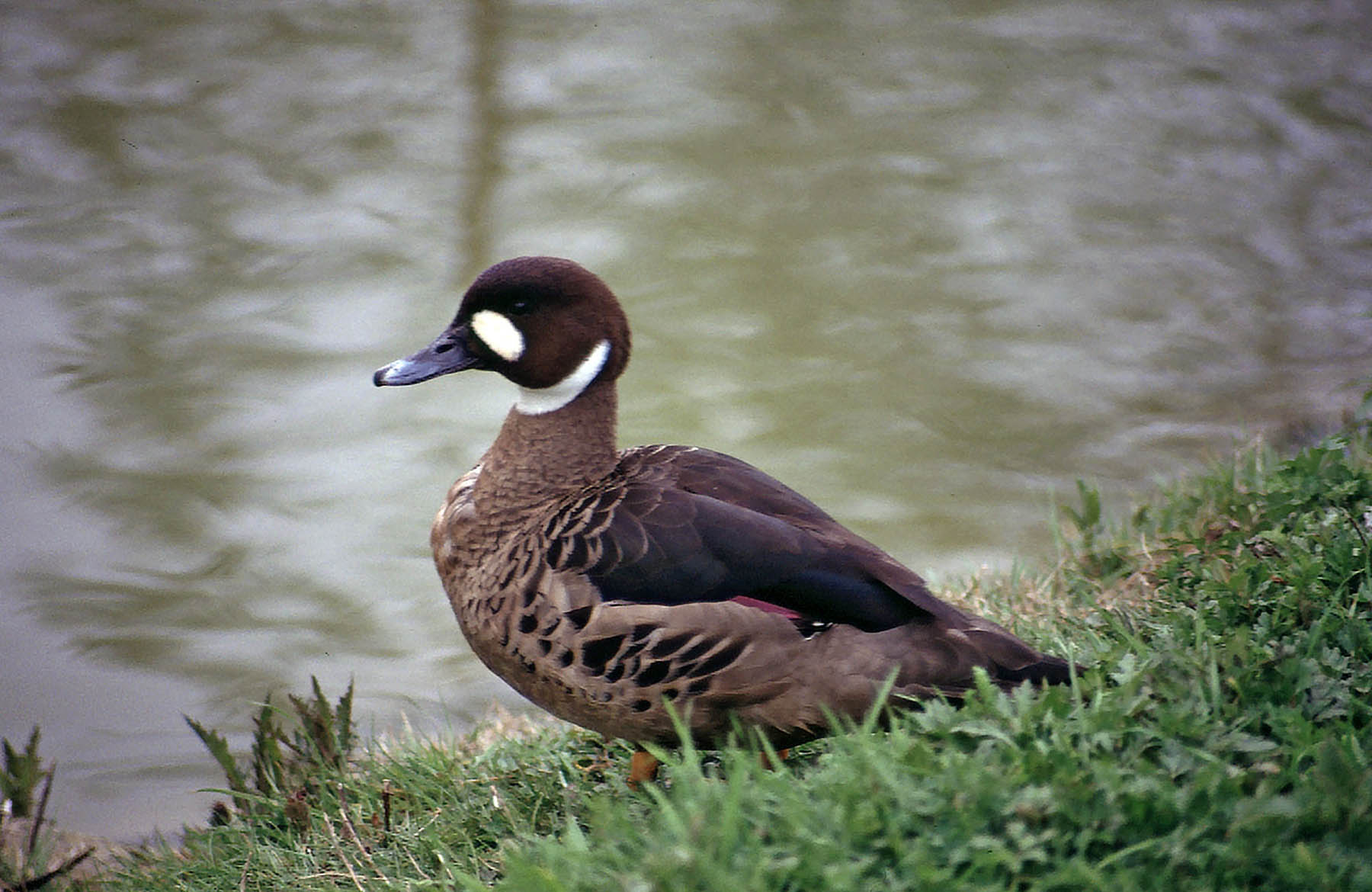
Bronze-winged duck, orSpectacled duck(Anas specularis)
Phylum —chordata
Class — aves
Order — anseriformes
Family — anatidae
Genus –anas
Appearance
Body length 46-54 cm; weight-up to 1.3 kg.
The bronze-winged duck has a brown head with a white stripe on its neck. Under the bird's eyes are large round white" smears" of feathers. The back is mottled brown and light brown, and the belly is gray-brown. The wings are very dark, almost black, with a bronze-crimson tint. The legs are light orange, almost yellow.
Sexual dimorphism does not take place.
Habitat
The bronze-winged duck lives among forested rivers and fast-flowing streams on the lower slopes of the South American Andes, in central and southern Chile and adjacent parts of Argentina.
Diet
Ducks feed on larvae and pupae usually found under rocks, aquatic animals, plant material, seeds, small fish, snails, and crabs.
Reproduction
The breeding season is in September-October. There are usually from 4 to 6 dark cream-colored eggs in a clutch. The incubation period takes a month.
During mating season, these ducks make sounds similar to the barking of a dog.
Ducks are monogamous; both male and female take part in raising chicks.
In captivity
The average lifespan is about 15 years.
Although not especially difficult to maintain and propagate, Spectacled Ducks usually have to be kept in their own enclosures. They are powerful birds with a need for their own space, notably in the breeding season.In captivity, these ducks spend a lot of time on land without going into the water to search for food.
Troughs or buckets are used as water sources for adult ducks at home. For more economical use of water and ensuring dryness, you can equip automatic drinkers.
Spectacled ducks do well on grower pellet supplemented with some sea duck pellet.
 Russian
Russian
 English
English
























